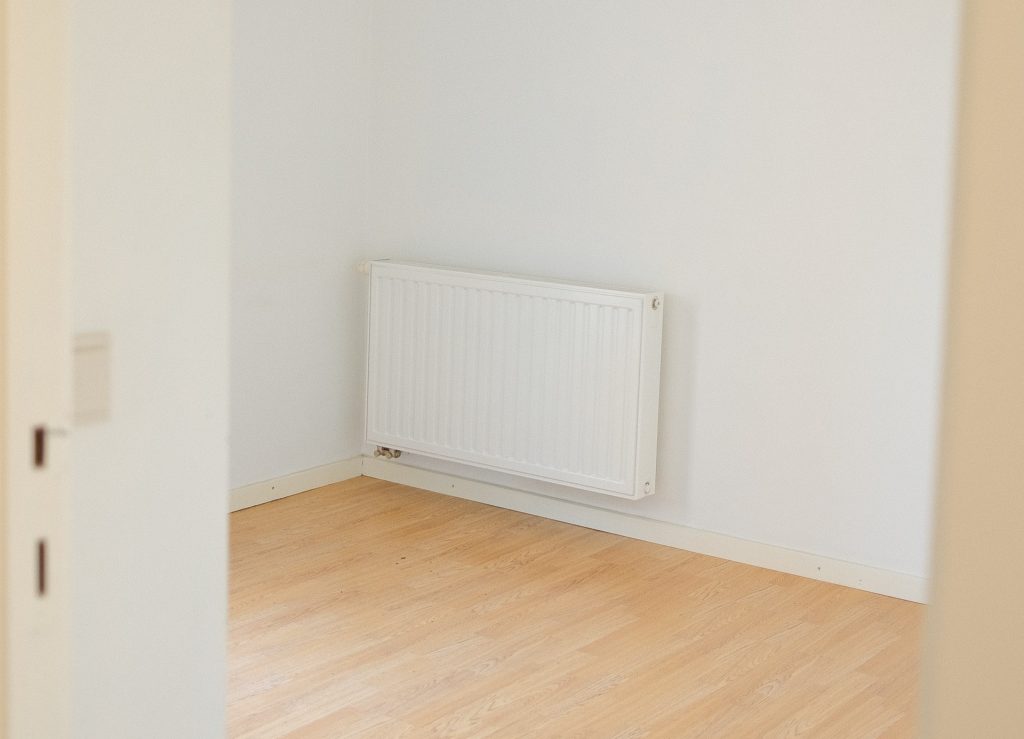You may have heard of radiant heat before, but what exactly is it?
Radiant heating is a type of heating system that uses radiation to heat objects and people in a space. This means that radiant heat warms surfaces directly instead of heating the air like traditional HVAC systems.
Because radiant heat doesn’t rely on convection to circulate air, it can be more comfortable and efficient than other types of heating.
This guide will give you everything you need to know about radiant heat, from how it works to its benefits.
How Does Radiant Heat Work in a House?
Generally, radiant heat works by emitting infrared radiation, which is a form of light that isn’t visible to the naked eye. This type of energy is what makes sunshine feel warm on your skin. Radiant heating systems use this same principle to quickly and efficiently heat up objects in the room without relying on air circulation.
So, what is radiant heat in a home?
In a home, a radiant heat system can be installed through various methods, including electric mats, hot water tubing on floors or ceilings, or radiators. A source of heat that burns fuel (gas or electricity) heats the coils or the water tubing in the floor or wall.
From here, the hot coils or water heats the objects or people in the house through infrared radiation. A good thing about this form of heating is that it doesn’t need to circulate the air as traditional HVACs do. This makes it much quieter and avoids wasting energy by warming the air in unoccupied rooms.
Types of Radiant Heating Systems
Now that we’ve answered the question “what is radiant heat?”, you should also know that there are three types of radiant heating systems. These include:
1. Electric Radiant Heating
In this system, electric coils generate heat as electric current passes through them. The metal coils are current resistant, so electricity moves using the loop, and the resistance produces heat.
Polymer sheets are curled all over these coils to insulate them and prevent any harm to homeowners. The coils heat the wall, floor, or ceiling based on the installation. When these surfaces heat up, the heat is transferred to the objects or people inside the house.
Although this form of radiant heating requires little maintenance and lasts longer than other options, it can be expensive due to the ever-increasing electricity price. They are generally more energy-efficient when used in small places of a home, such as a driveway or a bathroom.
2. Air Radiant Heating
These systems use a network of insulated tubes, often placed beneath floors, in ceilings, or walls. A blower device circulates hot air through the pipes, producing heat by radiating it off walls and furniture. The hot air that is blown through these pipes is usually heated by a furnace.
Because air cannot hold much heat, radiant air floor heating is expensive, so it is rare to find it in residential buildings. You can integrate it with solar air-warming devices, but those systems have the obvious disadvantage of only generating heat during the day.
3. Hydronic Floor Heating
This popular option is also the most cost-effective of the different forms of radiant heating systems. Here, hot water from a boiler is distributed equally beneath the floor via hydronic pipes. A manifold ensures the dispersion of the water across different pipes and pathways.
The hot water heats the floors or walls; the heat then radiates to the objects inside the room. Hydronic floor heating requires little maintenance and you can install it between the joists of existing floors; therefore, they are ideal for renovation work.
How does radiant heat work in a house? – Types of Radiant Floor Installations
When it comes to radiant floor installation, there are two main models. They include:
1. Wet Floor Installation
Wet floor installation is the most traditional method of radiant heating installation and shows how radiant heat works in a house. The radiant floor heating system takes longer to warm the air and floor in the house. However, the high thermal volume of concrete keeps the warming effect going for several hours, even after switching off the system.
Because electrical wires, hydronic tubing, or mats are in a broad concrete block or narrow concrete under the floor, the installation is a little more costly than a dry installation.
2. Dry Floor Installation
Dry floor radiant heating has evolved through a variety of installation methods. A dry setup is simpler to put in place, less expensive, and more convenient. You can install a panel for the floor heating system under the marble, wooden floors, and tiles.
Because of its high compression strength, the heating panel can protect the backfill surface and decrease the height. The panel is commonly used in the dining room, kitchen, bathroom, and other house parts.
Best Types of Flooring When Using Radiant Heating
Understanding how radiant heat works in a house is necessary before installing any radiant flooring. Consider your heating needs and pick any of these flooring types.
1. Bamboo flooring
Bamboo flooring comes in various types, and most are suitable when you plan to install a radiant heating system. When selecting a type of bamboo flooring, ensure you read the manufacturer’s instructions and recommendations. Most will state whether or not they can endure the stress of radiant floor heating.
2. Laminate Flooring
Laminate flooring has the appearance of tile flooring or solid hardwood but is less expensive. It also works well with radiant heat.
The laminate material consists of wood layers facing different directions. The material is much more stable than hardwood flooring since, unlike solid hardwood, laminate wood will not contract and expand.
3. Engineered flooring
Engineered wood flooring is an excellent option for radiant floor heating. It contains a high-quality base and a thin hardwood layer. Because of the plywood foundation, engineered wood is not affected by temperature fluctuations.
Regrettably, it is also a poor conductor of heat. Also, if you install the radiant hydronic floor heating system, a leakage could distort and damage the surface of your floors.
4. Tiled flooring
Tiles are perfect for radiant floor heating. In addition to tiles being thin, their mineral-based composition allows them to transfer heat well. Each tile quickly warms up when the system is turned on and retains less heat when the system is off.
What’s more is that because of the material, tile flooring is unlikely to degrade or rot in the event of a hydronic system leak.
5. Stone flooring
If you’ve never considered walking shoeless on stone in January, you’ve never experienced radiant heat. Natural stone flooring such as granite, travertine, or sandstone conducts heat extremely well. While stone may appear cold, it’s not if hot water runs beneath it.
Conclusion – What is radiant heat?
To summarize, radiant heat is a form of heating system which allows your home to be heated without traditional vents and ducts.
If you think radiant heating could be a good fit for your home, contact us, and we’ll help you decide which system will work best for you and your living space.





